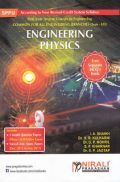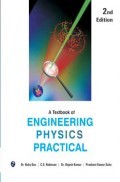Solid State Devices by B. Somanathan Nair, S. R. Deepa
Book Summary:
Designed as a text for undergraduate students of engineering in Electrical, Electronics, and Computer Science and IT disciplines as well as undergraduate students (B.Sc.) of physics and electronics as also for postgraduate students of physics and electronics, this compact and accessible text endeavours to simplify the theory of solid state devices so that even an average student will be able to understand the concepts with ease. The authors, Prof. Somanathan Nair and Prof. S.R. Deepa, with their rich and long experience in teaching the subject, provide a detailed discussion of such topics as crystal structures of semiconductor materials, Miller indices, energy band theory of solids, energy level diagrams and mass action law. Besides, they give a masterly analysis of topics such as direct and indirect gap materials, Fermi–Dirac statistics, electrons in semiconductors, Hall effect, PN junction diodes, Zener and avalanche breakdowns, Schottky barrier diodes, bipolar junction transistors, MOS field-effect transistors, Early effect, Shockley diodes, SCRs, TRIAC, and IGBTs.
In the Second Edition, two new chapters on opto-electronic devices and electro-optic devices have been added. The text has been thoroughly revised and updated. A number of solved problems and objective type questions have been included to help students develop grasp of the contents.
This fully illustrated and well-organized text should prove invaluable to students pursuing various courses in engineering and physics.
Audience of the Book :
This book Useful for M.Sc, electronics & telecom Student.
Table of Contents:
1. Crystal Structures
2. Energy-Band Theory of Solids
3. Carrier Transport in Semiconductors
4. Excess Carriers in Semiconductors
5. P-N Junction Diodes
6. Junction Breakdown and Schottky Junctions
7. The Bipolar Junction Transistor
8. Field-effect Transistors
9. Unijunction Transistors
10. Silicon-controlled Rectifiers
11. Triode AC Switch (TRIAC)
12. Insulated-gate Bipolar Transistors
13. Opto-electronic Devices
14. Electro-optic Devices
Appendix A: Schrödinger’s Equation and Its Solution
Appendix B: Properties of Materials
Appendix C: A Simlified Explanation of the Taylor’s Series Expansion
Index


















